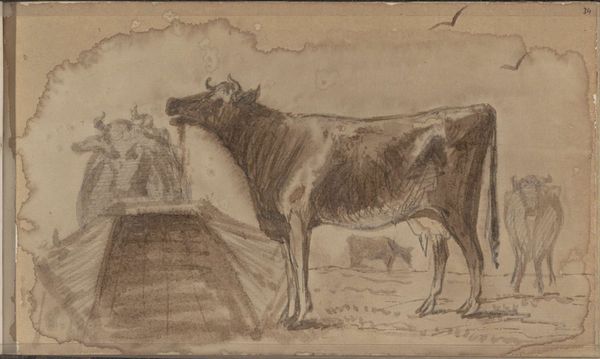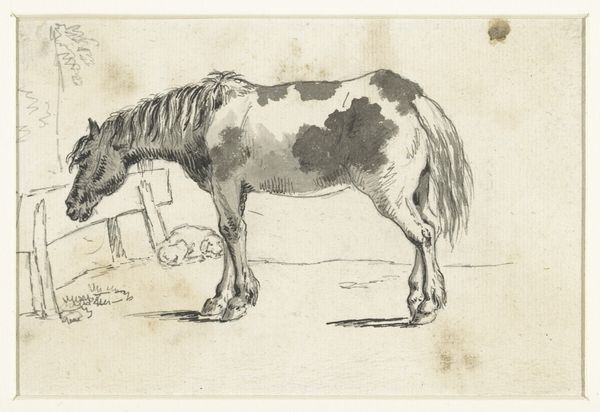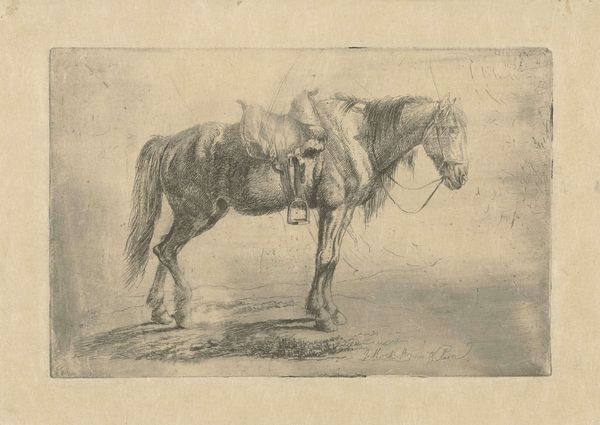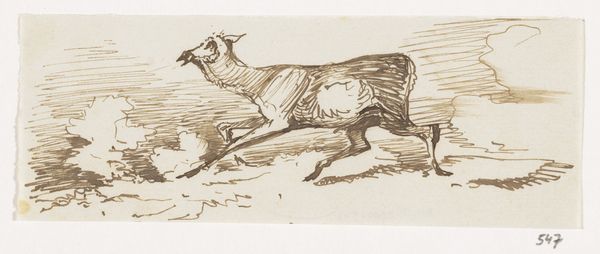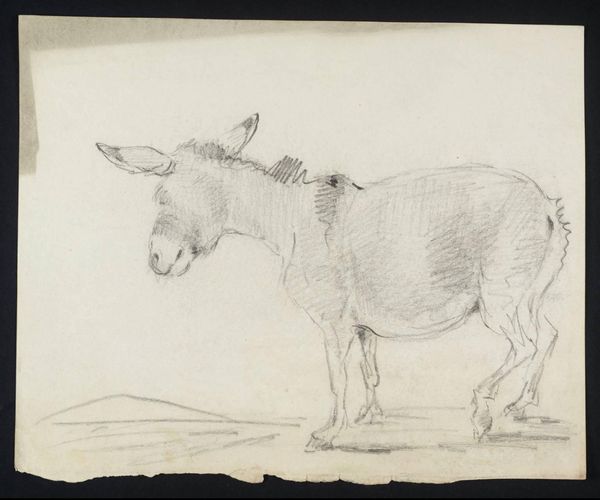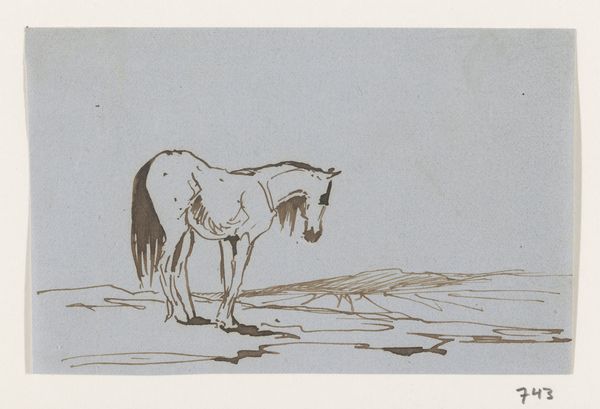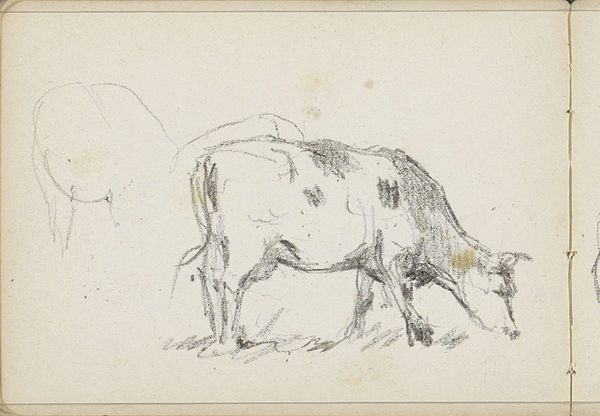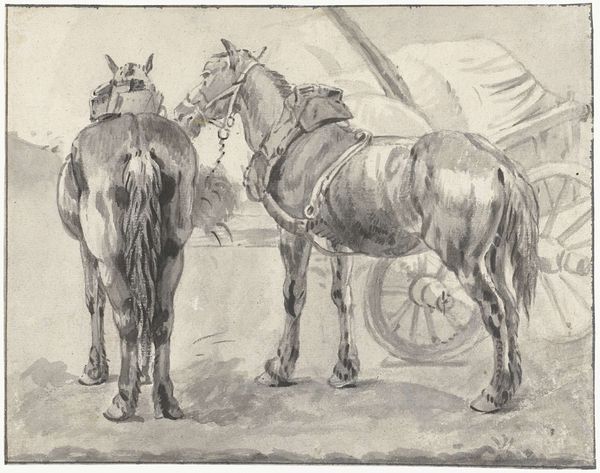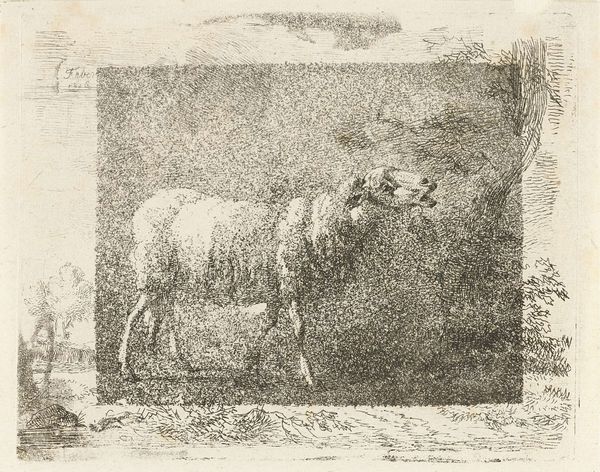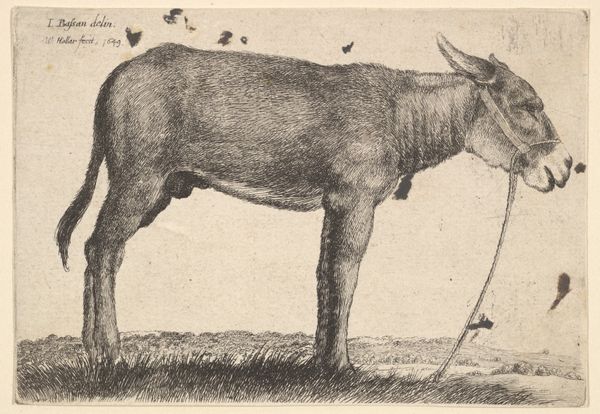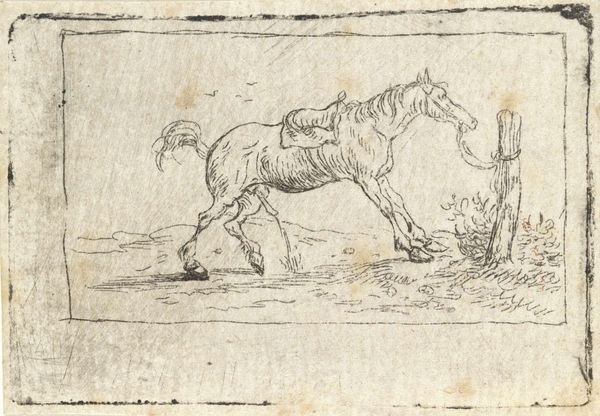
drawing, watercolor, ink
#
drawing
#
ink painting
#
animal
#
impressionism
#
landscape
#
figuration
#
watercolor
#
ink
#
horse
#
watercolour illustration
Copyright: Rijks Museum: Open Domain
Curator: Here we have Johannes Tavenraat’s work, "Vlak landschap met een paard," which translates to “Flat Landscape with a Horse,” made sometime between 1864 and 1880. It’s currently held here at the Rijksmuseum. The medium involves both ink and watercolor on paper. Editor: My first impression is a kind of faded grandeur. The sepia tones evoke a sense of nostalgia. And the horse, although centrally placed, looks quite isolated in this flat landscape. There's an unfinished quality too, in the blots and uneven washes. Curator: Indeed. Tavenraat was working within a cultural milieu deeply engaged with notions of the picturesque. His contemporaries, particularly within the Hague School, were also capturing scenes of Dutch life with a similar melancholic undertone. Consider the rise of landscape painting within this period; a romantic, almost nationalistic, view of the land takes hold. Editor: The technique is fascinating. The way the watercolor is applied – seemingly spontaneously. Those drips and spots might initially seem accidental but add a sense of texture and movement, particularly around the horse's mane and flanks. Are we meant to see this looseness as artistic freedom, or a comment about something else entirely? Curator: We might interpret the sketchiness as suggestive of a transient moment—an 'impression', if you will, which predates Impressionism proper but shows that he was an adopter of it. Consider the compositional choices too: the low horizon line accentuates the flatness of the landscape, thereby amplifying the horse's presence. It begs the question – what symbolic load does this horse carry? Editor: And that solitary windmill barely suggested in the background further emphasizes the sparseness. I’d wager that the horse, rendered with so much tonal contrast, becomes almost monumental despite its modest size. There’s a distinct focus on its shape and the contrasts and values around it to draw our attention to its structural anatomy. Curator: I think you’ve nailed it. This piece really encapsulates a turning point in art. Tavenraat straddles the academic and the modern. It’s a testament to a period grappling with its own identity. Editor: An apt summary! I will certainly leave with an enhanced view of how simple materials expertly applied, can evoke deep thoughts and emotions about our history.
Comments
No comments
Be the first to comment and join the conversation on the ultimate creative platform.
